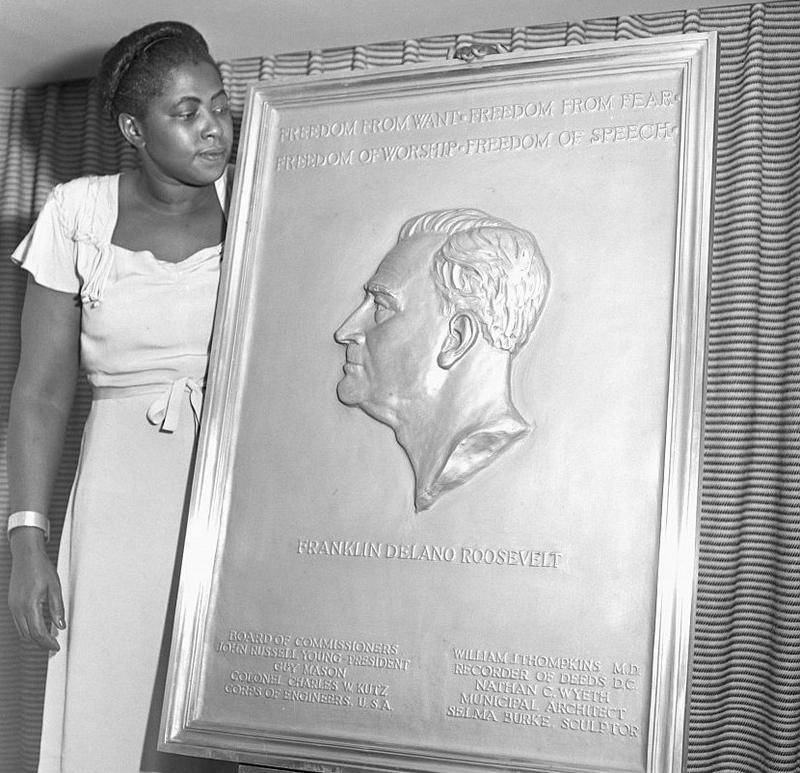Selma Burke And The Dime
By | May 2, 2022

If you're still carrying filthy physical money around for some reason, you can see the initials of John Sinnock, the official engraver of President Roosevelt's image, on the dime. By some accounts, however, the profile of Roosevelt was sculpted not by Sinnock but a Harlem Renaissance master named Selma Burke who never got the credit she deserved.
Selma Burke
Born in North Carolina in 1900, Selma Burke demonstrated artistic talent at an early age when she used clay from a nearby riverbed to sculpt animals. She trained to be a registered nurse but never gave up her passion for art, fascinated especially by the African artifacts that her missionary uncles brought back from their travels. After a stint as a private nurse and the loss of her husband, Burke studied art at Sarah Lawrence College and then in Paris, but after the threat of World War II forced her to return to the United States, she earned a Master of Fine Arts from Columbia University. By 1943, Burke was known as one of the leading artists of the Harlem Renaissance movement in New York City, even opening the Selma Burke School of Sculpture.

Burke And Roosevelt
That year, she won an art competition hosted by the Commission of Fine Arts and the honor of creating a sculpture of President Roosevelt to be hung in the new Recorder of Deeds Building in the nation's capital. At first, she used photographs of the president as reference, but after finding the materials too limiting, she wrote a request to the White House for a live modeling session. To her surprise, Roosevelt actually agreed, and she spent 45 minutes sketching the president while they discussed their childhoods. He found their session so pleasant that he invited her back the next day, and several months later, the First Lady visited Burke at home to see how the sculpture was going.

The Roosevelt Dime
President Roosevelt died in early 1945, about five months before Burke's sculpture was officially unveiled to the public. After his passing, the U.S. Mint proposed replacing the image of Lady Liberty on the dime with Roosevelt, who founded the March of Dimes in 1938 as a fundraiser for polio research. They assigned the task to John Sinnock, an assistant engraver at the Philadelphia mint, who said he worked from photographs of Roosevelt as well as two unknown relief sculptures. After these Roosevelt dimes began circulating, Burke and her supporters voiced their immediate criticism of Sinnock's design, claiming he plagiarized her sculpture and demanding an investigation. Instead, Burke found herself under investigation by the F.B.I. Sinnock vehemently denied the allegations, and few in government were inclined to look too deeply into a black woman's claims against a white man. Incidentally, Sinnock was later accused of stealing another artist's design for the Sesquicentennial of Independence half dollar, but his initials remain on the dime to this day while Burke's contributions often go overlooked.

